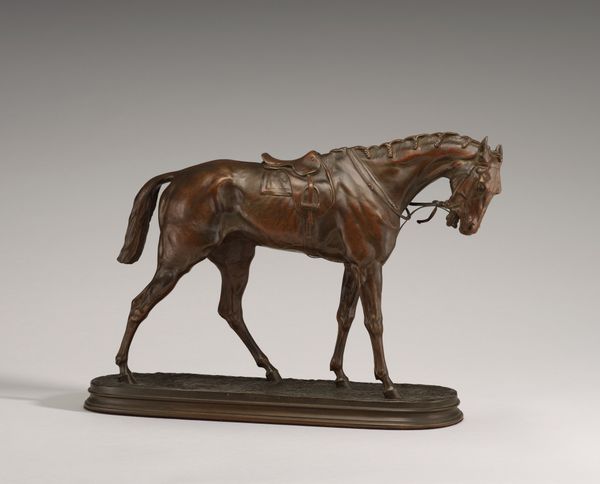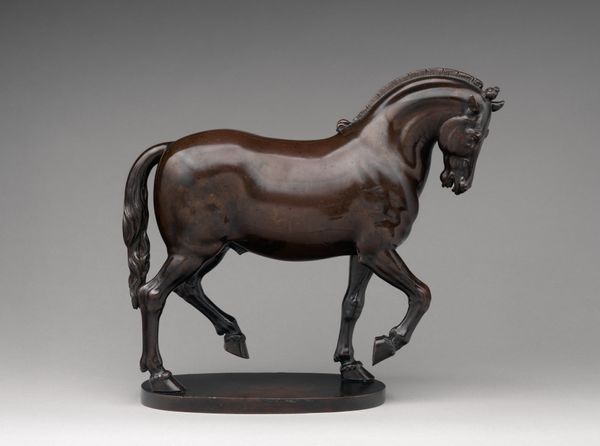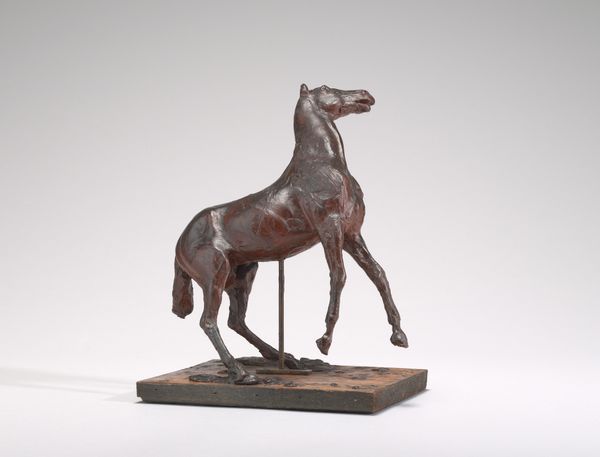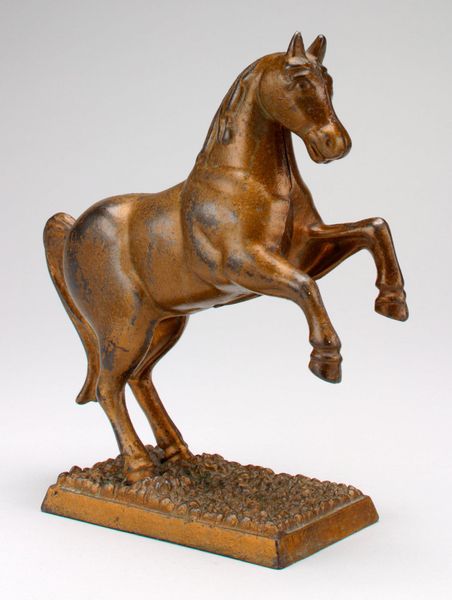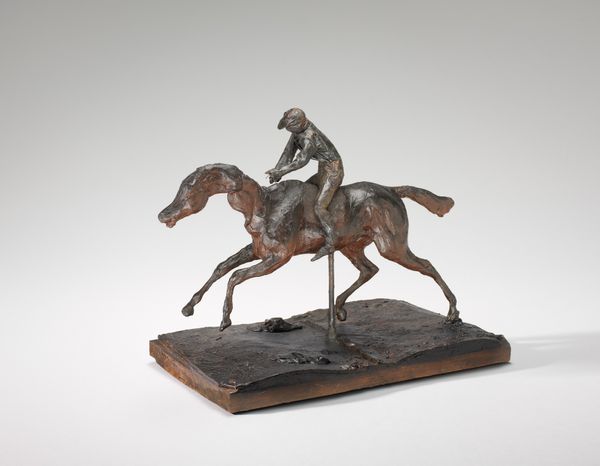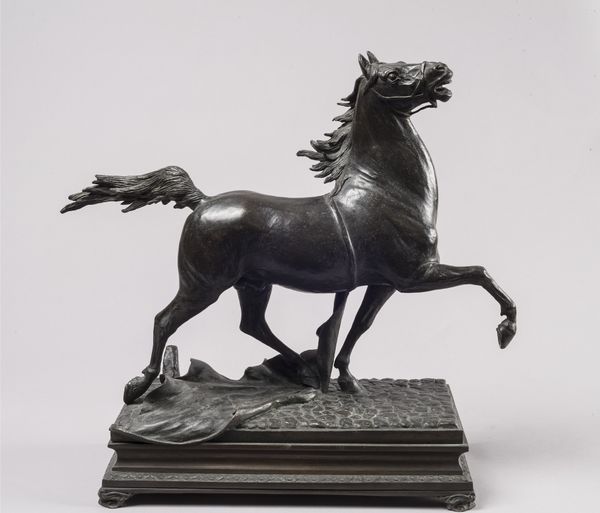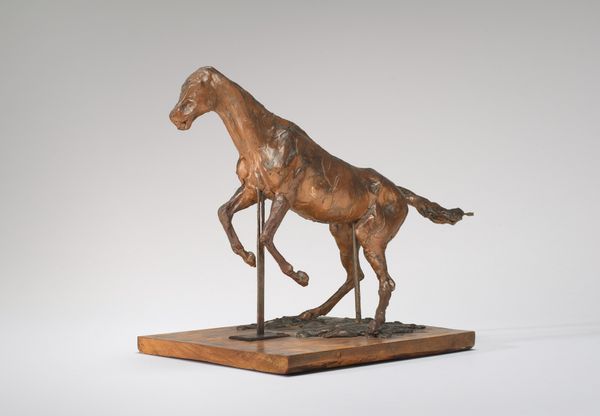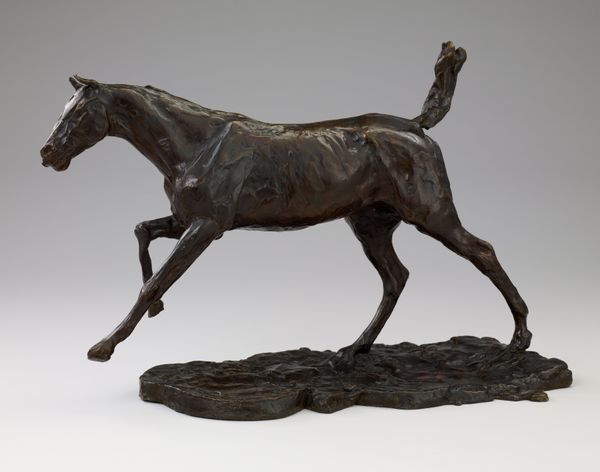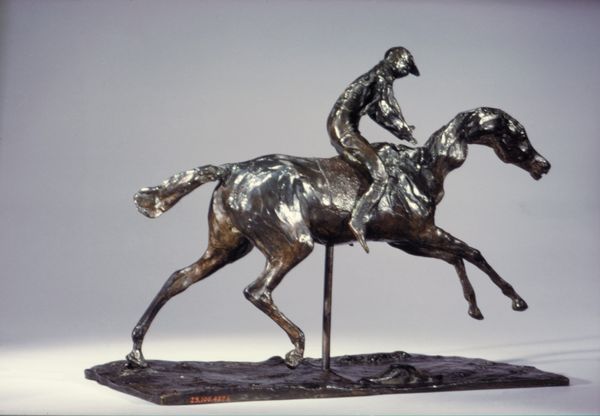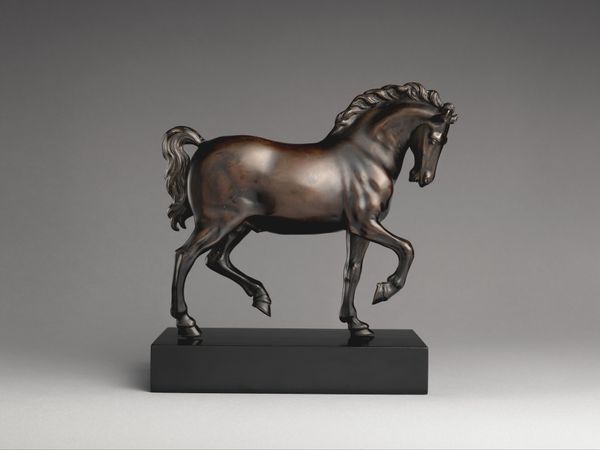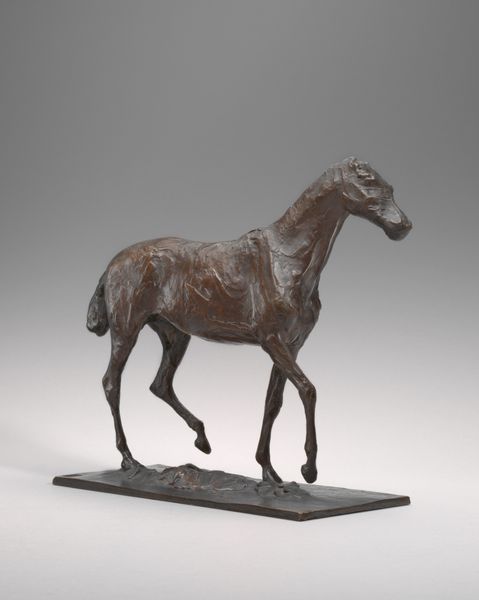
Dimensions: 27.9 × 45.1 cm (11 × 17 3/4 in.)
Copyright: Public Domain
Curator: Here we have Antoine Louis Barye’s "Cheval Turk," a bronze sculpture created sometime between 1850 and 1900. It’s currently part of the Art Institute of Chicago's collection. Editor: The first thing that strikes me is the sheer physical power captured in the horse’s pose. The rippling muscles and the slightly unbalanced stance give a real sense of restrained energy, like a coiled spring. Curator: Barye was renowned for his ability to capture animal anatomy with remarkable accuracy and vitality. This sculpture serves as more than a mere depiction of a horse; it embodies ideals of strength, nobility, and perhaps even untamed freedom that resonate deeply within the Romantic tradition. Consider the cultural importance of horses as symbols of power and prestige, especially within the context of the Ottoman Empire. Editor: And I notice the dynamism, even within the static form. The treatment of the mane and tail—the flowing lines give a palpable sense of movement, a counterpoint to the weight of the bronze. It is a kind of controlled chaos. Curator: Precisely! It also reminds me of the larger artistic currents swirling in Europe at the time. There's a certain orientalism at play, where the "Turk" designation isn't necessarily about accurate ethnographic representation but more about a generalized exoticism. Editor: That's an interesting point. It raises questions about how Western artists engaged with, and perhaps simplified, other cultures during this period. And the material itself—the bronze lends the horse a timeless quality, elevating it beyond the specificity of any one moment. The sheen on the surface really enhances that. Curator: Exactly. Barye tapped into something timeless in our fascination with the equestrian figure. Thinking of other equine sculptures throughout history – from classical Greece, Imperial Rome, or even dynastic China - horses carry such immense emotional, psychological, and cultural weight. Editor: Reflecting on this sculpture, it is interesting to see how Barye manages to convey so much implied movement and spirit within a fixed and enduring form. Curator: I agree. "Cheval Turk" prompts reflection on how cultural and historical significance gets layered and transformed over time.
Comments
No comments
Be the first to comment and join the conversation on the ultimate creative platform.
